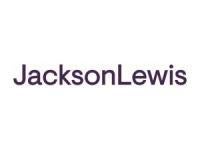The Occupational Safety and Health Administration (OSHA) has issued its 2025 update to the National Emphasis Program on Amputations in Manufacturing Industries (Amputations NEP), renewing the program and introducing several notable changes for employers. The directive aims to refine enforcement criteria and focuses on higher-risk workplaces.
The directive, effective June 27, 2025, and set to remain in effect for five years, continues OSHA’s mission to “identify and reduce or eliminate amputation hazards” in manufacturing and industrial settings. It emphasizes the dangers posed by inadequately guarded or poorly maintained machinery and outlines revised inspection protocols, exclusions, and targeting methodologies.
In a key update, establishments that had an Amputations NEP inspection within the previous 24 months, with no reported amputations during that period, may now be deleted from the programmed inspection list. In addition, unprogrammed inspections, such as those triggered by complaints or referrals, can only be expanded under this NEP if the establishment’s North American Industry Classification System (NAICS) code is listed in the updated Appendix B of the Amputations NEP.
Another significant exclusion is for establishments with 10 or fewer employees whose primary NAICS code appears on the “Low-Hazard Industry Table” of the Appropriations Act Directive. Such businesses are not subject to inspections under this NEP, further narrowing OSHA’s attention to larger high-risk industries.
Further, establishments participating in OSHA’s Voluntary Protection Programs (VPP) are removed from the NEP’s programmed inspection list for the duration of their approved participation. Those applying for VPP must be removed from inspection lists no more than 75 days before their scheduled onsite review begins.
The methodology for targeting industries has also been overhauled, which can be found in Appendix A of the Amputations NEP. OSHA now uses its recent Information Systems (OIS) data from 2019 to 2023, in addition to a three-category approach that focuses on industries with high OIS inspection numbers, high BLS amputation numbers, and higher employer-reported amputations. This process resulted in a revised list of NAICS codes, adding industries, such as automobile manufacturing and oilseed processing, and removing others based on updated risk assessments.
The directive also includes updated OIS coding instructions and mandates a 90-day outreach period for newly targeted industries. State Plans must adopt enforcement policies and procedures that are at least as effective as the federal directive and comply with the implementation timeline outlined in the Amputations NEP.





 />i
/>i
